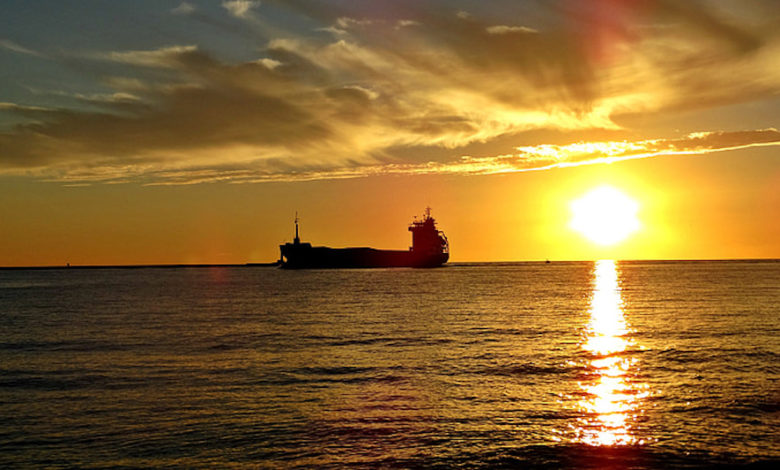Eliminating the blind spots in ESG strategies

The disconnect between shipboard and shoreside staff can create operational and ESG blind spots. Technology can be the solution, argues Osher Perry, CEO of visual fleet management company ShipIn.
Ships are getting bigger, while crews remain the same size – creating more work for already stretched seafarers. Simultaneously, fleet management teams lack real-time onboard visibility when ships are out at sea, creating a disconnect between shipboard and shoreside staff.
These twin factors are increasingly leading to operational inefficiencies and ESG blind spots – especially for the S and the G – causing unnecessary risk for shipowners and operators.
A commonly cited statistic is that 96% of at-sea incidents are attributed to human error, however, no seafarer is getting injured out of malice. Building a culture of safety involves daily operational decisions and protocols that can feel routine, like wearing hard hats in certain areas of the ship. Without a visual fleet management system, shoreside management or onboard leadership teams lack the visibility to ensure that even day-to-day operations are conducted as planned and trained.
Maritime CCTV is one option for enhancing visibility and improving the S and G onboard. With multiple cameras throughout key areas of a ship, such as on the engineering deck, in the cargo hold, and on the bridge, you gain visibility into daily operations. However, even with a dedicated resource to monitor the food, it can be impossible to catch everything in the 10,000-plus hours of footage generated on each ship each month.
But by adding AI and computer vision technology to CCTV, ship operators can have contextual, AI-driven safety alerts delivered in real-time – creating robust and measurable visual intelligence without the need for endless monitoring. This union of technologies provides operators with a powerful system to understand any technical or operational issues related to piloting, security, cargo handling or maintenance.
With real-time alerts into operational, maintenance or security risks that could prove costly if spotted too late, FleetVision technology also supports effective corporate governance – the ‘G’ in ESG – by enabling KPI tracking, inter-fleet benchmarking and sharing of good practices across vessels.
Critically, if an incident does occur, these technologies can facilitate timely action to keep mariners safe and improve conditions onboard – the S. Consider the sinking of the roll-on/roll-off cargo ship Felicity Ace in March 2022. In an emergency scenario like this, a network of AI-powered cameras could have detected smoke on the cargo deck immediately, alerting both the bridge and management on shore. This would have automatically started evacuation and emergency protocols, saving precious minutes to ensure the safety of crew and cargo.
By being able to capture and analyse onboard events, ship operators gain a clear picture of how to prevent incidents from reoccurring, improving their own performance and governance while also offering stakeholders and the wider community true accountability.
Maritime security is another critical issue. Seafarers aren’t trained soldiers. They don’t carry arms or ammunition, but they are at physical risk when travelling through certain vessel trade routes. When pirates attack and board ships — as they did in January 2021, kidnapping 15 and killing 1 crew member on the containership Mozart, or when they kidnapped 15 crew members onboard the chemical tanker Davide B in March 2021 – a FleetVision system can alert crew to the danger, giving them time to respond with potentially life-saving actions.
Stowaways pose another risk. This was starkly evident in 2018, when a group of stowaways threatened the crew of the tanker Nave Andromeda as their ship approached London. While representing a physical risk, stowaways also create a huge logistical challenge. Once crews detect stowaways on board, they must be repatriated to their country of origin at the cost of thousands of dollars in delays and expenses. Not only does this divert the vessel from its original operation, but additional costs – such as healthcare, food, clothing, and repatriation – exacerbate the issue for shipowners and operators.
Sometimes it is the crewmembers themselves causing the security issue. In June 2019, officials found a record-breaking 20 tons of cocaine on the containership MSC Gayane. It had been smuggled onboard using speedboats while the ship sailed from the Panama Canal to Pennsylvania. Some crewmembers helped load the packages, and after hiding the drugs among legitimate cargo, they used fake seals to reseal the containers.
With the right technology in place, however, these types of security risks can be detected early, and potentially averted. FleetVision can automatically spot suspicious craft and alert bridge officers to take necessary precautions, to deter a piracy attack or prevent possible drug smuggling activities.
AI technology married to visual analytics can also assist in effectively implementing the ISPS Code protocols for detecting and deterring acts that threaten maritime security. It does this by monitoring unauthorised access to restricted areas (such as lifeboats or the steering gear room) and in digitally logging other activities including security patrols and stowaway searches. The technology can also provide robust access control with digital logging of personnel authorised to board the vessel.
With the megaship trend here to stay and ongoing maritime security threats on the rise, it’s critical that fleet owners, operators, captains and crew acknowledge the new challenges they face. It’s possible to improve life onboard with technology that enables a complete 360-degree picture of onboard operations. FleetVision technology can eliminate blind spots and ensure operations are optimised. It can also drive improvements in ESG by better supporting crew onboard, improving safety and security, and ensuring proper governance across even the largest fleet.
When it comes to ESG, technology can support even the most ambitious goals.
